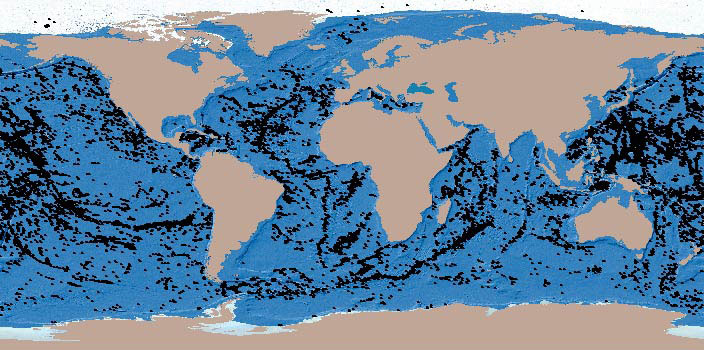Publications and Reports
The Republic of Somalia, located in the Horn of Africa, covers a total surface area of 637,657 km2 with an estimated population of 10 million people from six (6) major clans and various minor clans. The country has been without a central Government since 1991. Years of political instability and war have resulted in over 1 million deaths, both as a direct result of the fighting and due to the country’s inability to cope with recurrent droughts, devastating floods and diseases.
South Africa has an extensive coastline in the southern section of Agulhas and Somali Current Large Marine Ecosystem (ASCLME) region, with the coastal provinces of KwaZulu Natal (KZN), Eastern Cape and Western Cape forming the seaboard. The southeast coastline is remarkably linear, with a narrow continental shelf descending to an abyss (deeper than 4,500 m) in the southern Transkei Basin.
Madagascar est la 4ème plus grande île du monde, plus précisément. En effet, outre sa superficie qui couvre 590.750 km², elle se prolonge dans l’océan par un plateau continental pouvant aller jusqu’à p^lus de 100 km couvrant ainsi une superficie supplémentaire de 117.000 km². Madagascar est une république dotée de 6 provinces, 28 régions et de près de 1300 communes.
Somalia has the longest coastline in Africa, measuring 3,330 km and claims an EEZ of some 830,389 km² (Per Erik Bergh. 2011). Its fishery resources are significant, with an estimated sustainable potential in the order of 200,000 MT per year for pelagic fish stocks, based on several fish surveys conducted in the 1970s and 1980s (FAO Fishery Country Profile. 2005).
The coastal and marine habitats of the Western Indian Ocean (WIO) region support the livelihoods of a rapidly growing population, currently estimated at over 60 million. The region is still one of the least ecologically disturbed in the world, hosting over 2,200 species of fish, including rare and endangered species, such as the dugong, coelacanths, marine turtles, sharks, birds and over 350 species of corals and a diverse assemblage of coastal forests, mangrove forests and sea grass beds.
The dugong (Dugong dugon) is the only herbivorous mammal that is strictly marine, and is the only extant species in the Family Dugongidae. It is listed as vulnerable to extinction at a global scale by The World Conservation Union (IUCN).
This Regional Synthesis Report on the status of pollution in the WIO region synthesises information presented in the National Status of Pollution Reports which form the basis for the TDA of the WIO region. The TDA is an important part of the overall strategic planning process, providing a basis for formulation of the Strategic Action Plan (SAP) and the harmonised National Action Plans (NAPs) on environmental protection of WIO region. The focus of this study is on land-based sources of marine pollution, i.e.

In this report a review of national policies and legislation addressing issues of the alteration and destruction of critical coastal and marine habitats, and the institutional arrangements towards alleviating the same is presented. The land-based social and economic activities impacting on the habitats and the extent to which the latter are affected is assessed. Emphasis has been placed on the link between the impacts and tourism or tourism catalysed activities.
The Indian Ocean Tsunami of 26 December 2004 affected part of Somalia, with most of the damage experienced in the north-east along a 650 km coastline stretching from Xafuun in the Bari region, to Garacad in the Mudug region. About 44,000 people are believed to have been affected by the tsunami.